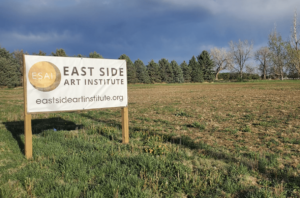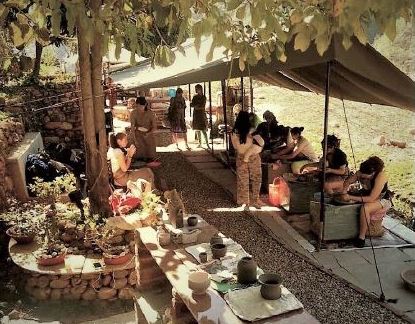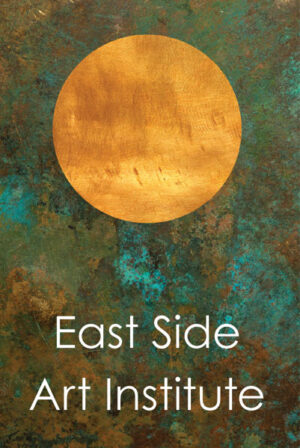Areas of Study
 East Side Art Institute will present a unique, advanced ceramics studio program in collaboration with ceramic artist and educator, Nancy Utterback. Additionally, similar studio programs in painting & drawing, woodworking, sculpture, metal, and glass will be taught under the direction of local masters.
East Side Art Institute will present a unique, advanced ceramics studio program in collaboration with ceramic artist and educator, Nancy Utterback. Additionally, similar studio programs in painting & drawing, woodworking, sculpture, metal, and glass will be taught under the direction of local masters.
The curriculum provides up to eight months of advanced, personalized instruction for artists who are serious about taking the next step in their art education. This program is designed to respond to the changing needs of students and to give non-traditional students the same quality of information and critique found in a university program.
Certificate Program
Participants can earn a “Certificate of Completion” through a combination of instruction and individual mentoring. The program will extend beyond the classroom to include artist lectures, gallery tours, and studio visits with established artists.
Certificate recipients will possess the technical skills, artistic context, and personal insight to build a strong and cohesive body of work. They will learn how to present and promote their work, whether they are seeking gallery representation, applying to graduate school, or selling work to the public. Artists will have formed new connections with peers and established artists in the field and developed their professional credentials. The program will culminate in a final exhibition at the Institute.
Education Affiliations
- East Side Art Institute has affiliated with:
- CSU to offer college credit classes and programs. Students will have the option of taking classes for college credit, working toward a certificate or independent study.
- Boulder Valley School District with the goal of providing classes through Life Long Learning.
- Accredited Online Schools to offer art opportunities to home-schooled students.
Accessibility
Classroom design includes handicap accessibility to all workspaces, equipment, supplies, and clean-up areas.
We believe in providing opportunities for all individuals to enjoy a creative life and we make accommodations that allow each person to find their own creative expression through engaging with art. We welcome and promote community inclusion with individuals of various talents, abilities, and special needs. We believe that every person has something special to offer to the world and East Side Art Institute is committed to supporting that.
Environmental Best Practices
 By supporting research, the Institute will help students and faculty discover and publish information about best environmental practices in the arts. Sharing knowledge about how to reduce, eliminate, and dispose of toxic materials, minimize equipment emissions, limit water use, reclaim materials, and find ways to achieve zero waste is a top priority for ESAI. Artists will learn how to reduce their carbon footprint without compromising the process or the art they create. This effort expands the educational contribution of ESAI faculty and students and provides them the opportunity to lead the art community into a more sustainable and healthy future.
By supporting research, the Institute will help students and faculty discover and publish information about best environmental practices in the arts. Sharing knowledge about how to reduce, eliminate, and dispose of toxic materials, minimize equipment emissions, limit water use, reclaim materials, and find ways to achieve zero waste is a top priority for ESAI. Artists will learn how to reduce their carbon footprint without compromising the process or the art they create. This effort expands the educational contribution of ESAI faculty and students and provides them the opportunity to lead the art community into a more sustainable and healthy future.
We are especially interested in conducting research for improving soil health and water retention with regenerative methods in caring for our campus property. As we learn from our global community about best practices in these areas, ESAI will conduct studies to determine what plants suited to our climate sequester the most carbon, thrive on less water, and are the most environmentally friendly. We are excited to team with local farmers and gardeners to share our learning with each other. We believe that by conducting research into these questions, and instituting the regenerative practices we learn, what we do may also help and inspire others.
Caring for Our Planet
 ESAI is currently exploring sustainable land renewal activities for our 14 acre campus that all may participate in and enjoy. Preserving the natural areas of our campus allows art students, our local community, and all who visit East Side Art Institute a quiet place for reflection and creative engagement with the outdoors.
ESAI is currently exploring sustainable land renewal activities for our 14 acre campus that all may participate in and enjoy. Preserving the natural areas of our campus allows art students, our local community, and all who visit East Side Art Institute a quiet place for reflection and creative engagement with the outdoors.
As responsible stewards of this land, we are choosing cover crops that are helpful to the soil. In our garden areas we are growing vegetables, herbs and plants for use in art making. Making dyes for paper, cloth and yarn from plants we grow and using plant fibers for papermaking, ceramics and for spinning yarns adds an exciting and fun dimenstion to our art classes. ESAI is teaming with WishGarden Herbs to further our interest in growing botanical plants used for medicinal purposes. Another area of interest is in plants for making less harmful and more sustainable building materials.
Whatever we grow on the ESAI’s 14 acres and all that we learn in our research and experimentation, we look forward to sharing with our local community and small farmers in the region.
Art for Everyone
- Offering master workshops several times a year will inspire working artists to reach their full potential while providing an opportunity for the community to see and participate in the magic and mystery of the creative process.
- By providing much-needed exhibition space in Boulder County, we can offer an opportunity for the community at large to enrich their lives through the arts. The gallery space will be located within the building where works created by students will be displayed for sale. Together faculty, students, and the community can celebrate the human experience through art.
- An artist-in-residence program will allow national and international artists to come to Boulder County to instruct and inspire local artists to reach greater heights.
- A small supply shop for students to buy art supplies needed for their classes will be housed in the main building. Local artists are welcome to frequent the supply shop as well.
- Our 14 acre campus affords the Institute the opportunity to host community events, open houses, and fundraisers. Ample parking space, quiet natural areas, and space for children to safely run around and play will make the location attractive for such events.
- As our classrooms and outdoor class areas are completed, ESAI will initiate summer and holiday week-long camps for children where they will learn to create art in several art forms and have opportunities to enjoy nature and fresh air. As our regenerative land efforts evolve, we will develop organic gardens where children can learn about how food grows and how to sustain a garden. They will be able to harvest items to use in their art making and to eat.
- Family Fun craft dates enable parents and children to share in creating art in a variety of styles and forms as they work and learn side-by-side. Evening gatherings to make pizza in our outdoor pizza oven offers additional opportunities to enjoy engaging in art making or spontaneous music, dance or storytelling.


